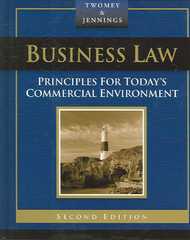Answered step by step
Verified Expert Solution
Question
1 Approved Answer
Tom earns $40 per hour for up to 40 hours of work each week. He is paid $60 per hour for every hour in excess
- Tom earns $40 per hour for up to 40 hours of work each week. He is paid $60 per hour for every hour in excess of 40. Tom faces a 10 percent tax rate and pays $10 per hour in child care expenses for each hour he works. Tom receives $100 in child support payments each week. There are 110 (non-sleeping) hours in the week. Graph Tom's weekly budget line.
- Currently a firm pays 20% of each employee's salary into a retirement account, regardless of whether the employee also contributes to the account. The firm is considering changing this system to a 20% match, meaning that the firm will match, up to 20% of each employee's salary, the employee's contribution into the account. Some people at the firm think this change will lead employees to save more and therefore to be able to afford to retire, while others at the firm believe this will lead employees to have less retirement savings and therefore be less able to afford to retire. Will workers be better off or worse off with the newer retirement plan?
- Suppose the marginal expense of hiring another worker is $150 per day, and the marginal expense of hiring current workers for an extra hour is $25. The added output associated with an added worker, holding both capital and average hours per worker constant, is 150. The added output generated by increasing average hours per worker, holding capital and the number of employees constant, is 15. If the firm is interested in maximizing profits, should it hire more workers or have its current workers work more hours?
- In 2002, a French law was passed that cut the standard workweek from 39 to 35 hours (workers got paid for 39 hours even though they worked 35) while at the same time prohibiting overtime hours from being worked. (Overtime in France was paid at 25 percent above the normal wage rate.) Assume 110 hours of leisure are available.
a. Draw the old budget constraint, showing the overtime premium after 39 hours of work.
b. Draw the new budget constraint.
c. Which workers in France are better off under the 2002 law and which are worse off? Explain your conclusions.
Step by Step Solution
There are 3 Steps involved in it
Step: 1

Get Instant Access to Expert-Tailored Solutions
See step-by-step solutions with expert insights and AI powered tools for academic success
Step: 2

Step: 3

Ace Your Homework with AI
Get the answers you need in no time with our AI-driven, step-by-step assistance
Get Started


